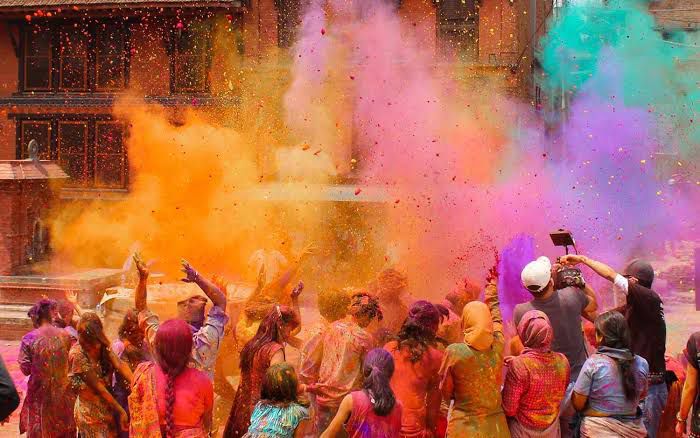With Nauroz celebrations underway across the globe, what better time to dive into various spring and new year festivals Pakistanis celebrate? A thread: 🌻🌹🌷🌼🪷🌸🌺
#SpringEquinox #Spring
#نوروز
#SpringEquinox #Spring
#نوروز

Basant:
It marks the advent of spring with people taking to the rooftops for kiteflying, traditional sweets, friends and family. It is celebrated in Punjab and KPK, along with Quetta and Khuzdar in Balochistan. People dress up in colourful clothes, (often yellow).

It marks the advent of spring with people taking to the rooftops for kiteflying, traditional sweets, friends and family. It is celebrated in Punjab and KPK, along with Quetta and Khuzdar in Balochistan. People dress up in colourful clothes, (often yellow).


Baisakhi:
Celebrated on April 13th, it is a harvest festival that marks the Punjabi New Year. It is celebrated with a lot of fanfare, traditional Punjabi attire, processions, and traditional music and dance.

Celebrated on April 13th, it is a harvest festival that marks the Punjabi New Year. It is celebrated with a lot of fanfare, traditional Punjabi attire, processions, and traditional music and dance.


Holi:
Also known as the "Festival of Colors," it is celebrated by the Hindu community across Pakistan in March. People celebrate this festival by smearing coloured powder and water on each other, dancing, and enjoying sweets and other delicacies.

Also known as the "Festival of Colors," it is celebrated by the Hindu community across Pakistan in March. People celebrate this festival by smearing coloured powder and water on each other, dancing, and enjoying sweets and other delicacies.


Jashn-e-Baharan
“Celebration of Spring” is marked by melas, music, dance, and poetry recitals, and people decorate their homes and streets with colourful flowers and lights in Sindh, Balochistan, Azad Kashmir and Gilgit Baltistan.


“Celebration of Spring” is marked by melas, music, dance, and poetry recitals, and people decorate their homes and streets with colourful flowers and lights in Sindh, Balochistan, Azad Kashmir and Gilgit Baltistan.



Nauroz:
One of the oldest festivals in the world, the Persian New Year's festival is celebrated on the first day of spring, usually the 21st of March. It is celebrated with particular zeal in Balochistan, GB, and by the Hazara community, Afghan migrants and some Pakhtun tribes.


One of the oldest festivals in the world, the Persian New Year's festival is celebrated on the first day of spring, usually the 21st of March. It is celebrated with particular zeal in Balochistan, GB, and by the Hazara community, Afghan migrants and some Pakhtun tribes.



Chilim Joshi Festival:
It is celebrated by the Kalash community to welcome the arrival of spring, and blooming cherry blossom flowers. During the festival, people wear traditional clothes, sing and dance, and offer sacrifices to their gods and goddesses.


It is celebrated by the Kalash community to welcome the arrival of spring, and blooming cherry blossom flowers. During the festival, people wear traditional clothes, sing and dance, and offer sacrifices to their gods and goddesses.



• • •
Missing some Tweet in this thread? You can try to
force a refresh































